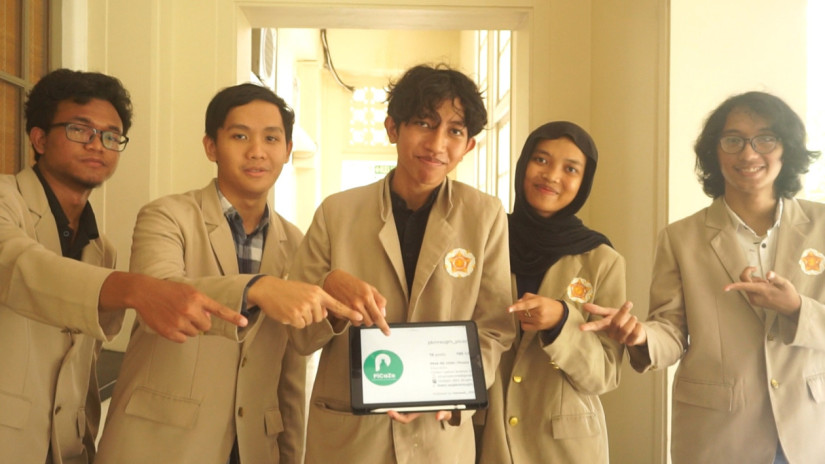
Indonesia faces serious challenges with increasing plastic waste and carbon dioxide (CO2) emissions. As of 2023, the Asian Development Bank reported that Indonesia generates around 7.8 million tons of plastic waste annually. 62.85% of the waste produced is improperly managed due to poor waste collection systems.
According to the Indonesia Energy Outlook, CO2 emissions in Indonesia reached 696.75 tons in 2022. In the worst-case scenario, they are predicted to continue rising to 1,080 million tons by 2033.
One type of plastic waste commonly found in the environment is plastic bottle packaging or Polyethylene terephthalate (PET). With a large amount of PET needing management, a Student Creativity Program in Exact Science Research (PKM-RE) team from Universitas Gadjah Mada researched the potential use of PET plastic waste as an absorbent in carbon capture technology.
This technology utilizes PET plastic waste to capture CO2 gas from the air. The development of PET plastic waste-based carbon capture technology has the potential to address two major environmental problems currently faced in Indonesia.
This PKM-RE team consists of five students from various study programs: Pandu Sukma (Chemistry 2022), Samuel Khrisna (Chemistry 2022), Muhammad Hafidz (Chemical Engineering 2022), Rezinda Febri (Physical Engineering 2023), and Saddam Dzaki (Chemical Engineering 2022).
Dr. Fajar Inggit Pambudi, a lecturer from the Faculty of Mathematics and Natural Sciences at UGM, supervises them.
According to Pandu Sukma, the head of the PKM-RE team, the problem of plastic waste and CO2 emissions can be addressed with technology that can solve these issues simultaneously.
This is supported by data mentioned by Sharifian and Kolur in their 2022 research, stating that PET plastic waste contains 60% wt carbon, making it potentially usable as an adsorbent in carbon capture technology in the form of activated carbon.
Previous research has attempted to utilize plastic waste as an adsorbent in carbon capture technology. However, many shortcomings still need to be addressed.
Muhammad Hafidz, one of the team members, said, “Research to utilize plastic waste has been done before, but the adsorption capacity or the amount of CO2 gas that can be captured by activated carbon made from plastic waste is still relatively small and less effective for large-scale application.”
He added that this shortcoming could be addressed by making a composite with Zeolite 13X material.
“We have studied how this shortcoming can be addressed by making a composite or mixing activated carbon from plastic waste with zeolite material. One that can be used is Zeolite 13X,” said Muhammad Hafidz during an interview on Monday (Jul. 22).
Pandu Sukma added, “We varied the composition of the activated carbon mixture with Zeolite 13X in our research. Then we conducted several laboratory tests on the resulting material to determine surface area characteristics, CO2 absorption capacity, crystallinity, and validation of the composite formation.”
Based on the research, the PKM-RE team claims that PET plastic waste can be utilized to capture CO2 from the air in the form of activated carbon modified with Zeolite 13X. Modifying the structure of activated carbon with Zeolite 13X increases its adsorption capacity.
This four-month research is expected to provide an alternative solution to Indonesia’s waste and CO2 emission problems.
Author: Pandu Sukma

